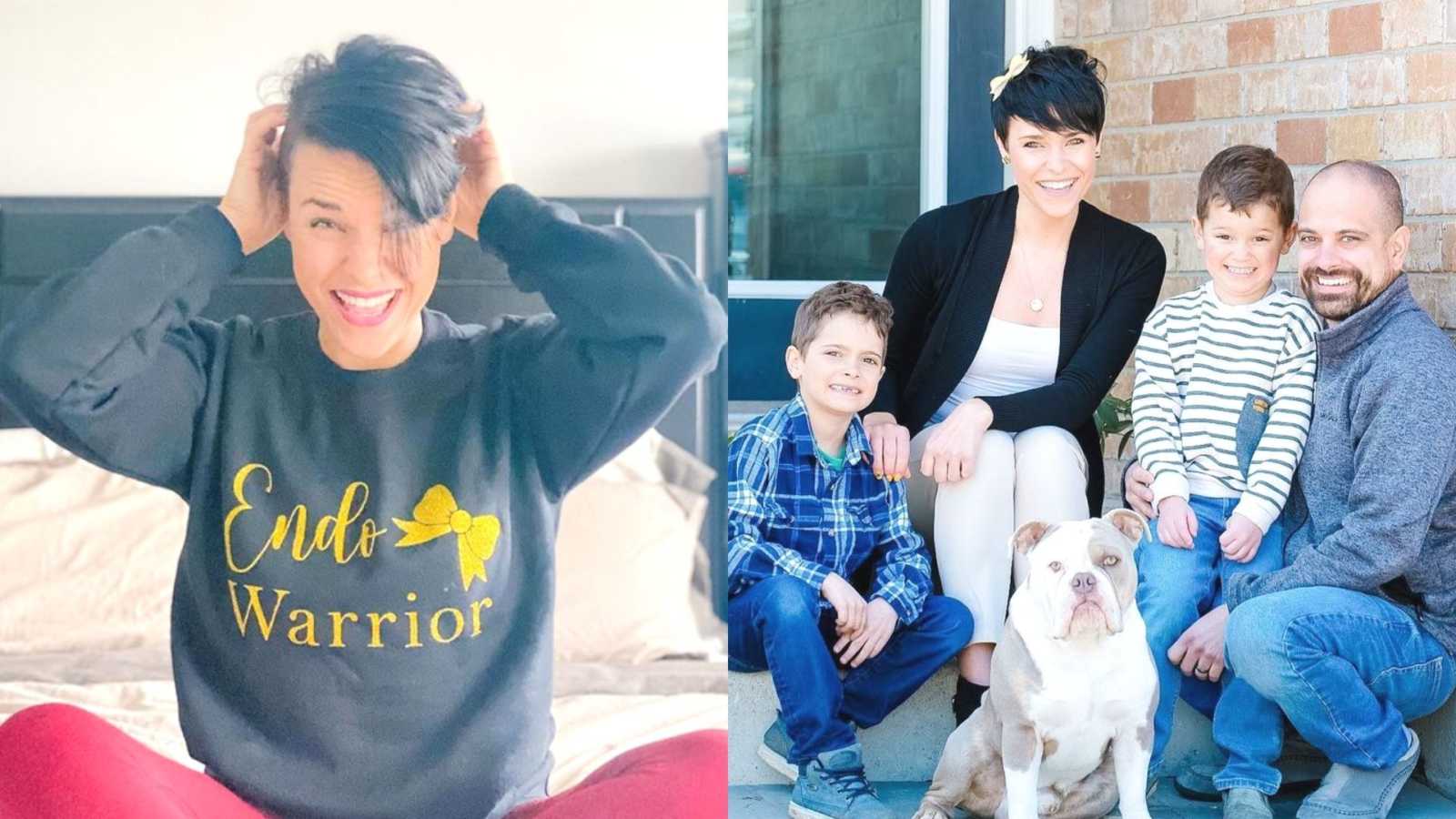“It all started at the age of 7. Chronic, recurrent urinary tract infections. I remember being in the bathroom with my mom at the doctor’s office, and her pleading with me to just pee in the cup so we could get the medicine to make it all better, while I fought hard not to pee. It burned, it hurt, there was blood, and I was scared.
This went on for months, even years. We heard every reason as to why. ‘Swimming in public pools.’ ‘Not wiping after the use of bathrooms properly.’ Into my teenage years, my doctor then used the excuse of not peeing after having sex, even though I made sure to go before and after— way to kill the mood right?

When my mom was 9 years old, she started to experience painful, heavy periods and debilitating pelvic pain that would drop her to her knees in the middle of the street and having to call my dad to come and pick us up. This was when I was first aware of what endometriosis was. I grew up in a fairly open and honest household, where things like this weren’t hidden or ignored.
Once I hit 14 is when things got real. The bleeding and the pain was out of this world. My periods would last anywhere between 12 and 28 days a month. I thought it was normal because no one talked about it, but my mom knew it wasn’t. It wasn’t normal to miss school, events, or my part-time job because I had my period.

I was diagnosed with endometriosis at the age of 19 and had been suspected of adenomyosis, after exhausting most of the gynecologists in my city dismissing me. It was beyond frustrating when I was experiencing the same symptoms my mom had been experiencing, yet being told endometriosis was not the cause.
I heard every myth in the book. I was too young. It only affects those who have had kids. In a few months, it will all even out and be fine. Birth control will fix the problem. My mom was my biggest advocate, and wasn’t accepting any of these ‘reasons’ for an answer, and pushed to be referred out of the city. I was referred to a gynecologist in a larger city, where she booked me for laparoscopic surgery to diagnose my symptoms. All signs and symptoms pointed to endometriosis. After my diagnosis, I was put on every hormonal drug you could think of for period problems.
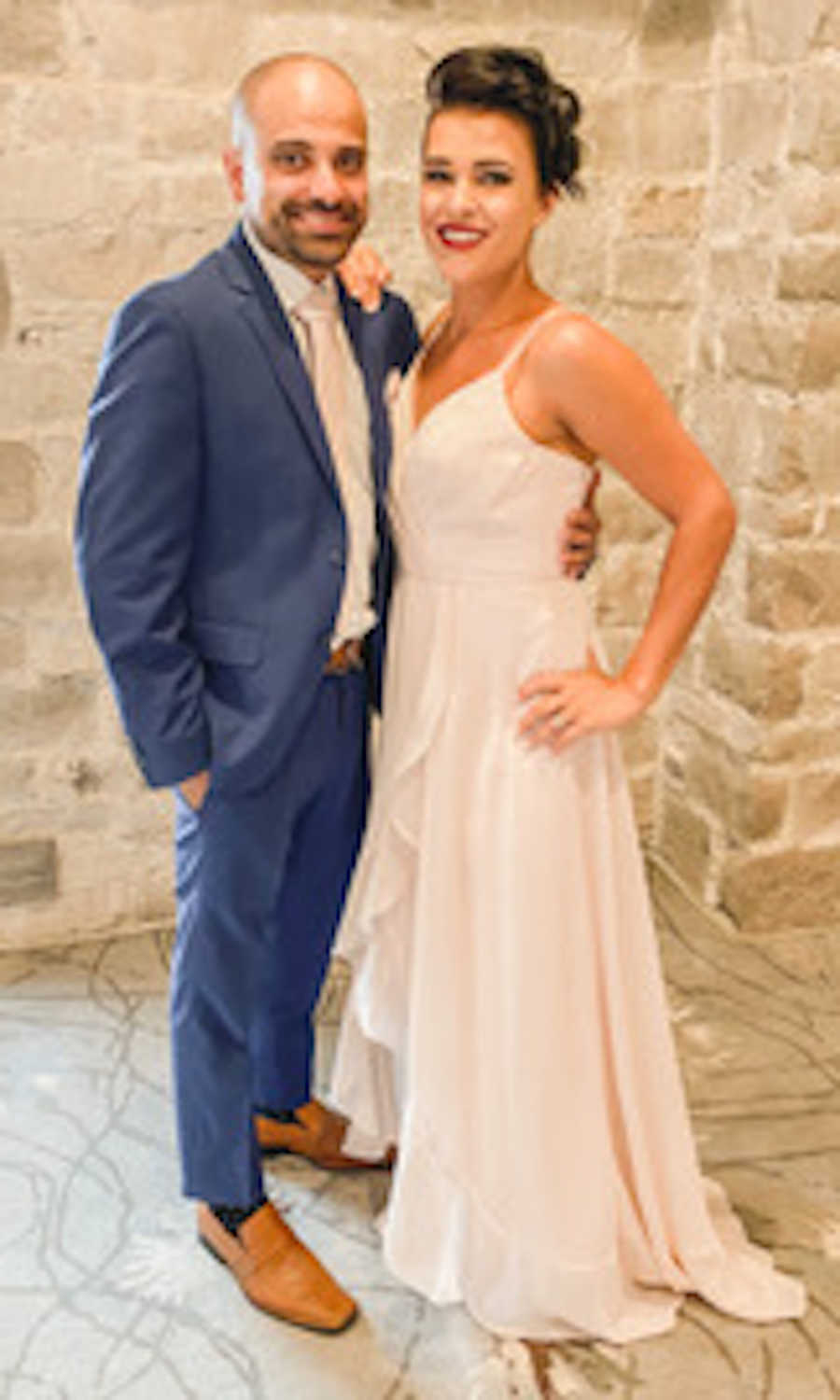
Getting a diagnosis didn’t really change much. I was happy that I had a reason and there was a cause for my symptoms, but the only thing it really changed was the management aspect. At the age of 19, and after my diagnosis, I was told it would be difficult and possibly impossible to get pregnant without serious intervention. At this point, I had been with my boyfriend (now husband) for a year and a half, and we were getting fairly serious. When I told him the chances of me having kids would be low, he never once looked at me differently, and it never changed anything between us. It would just be something we would navigate and journey through together when the time comes.
After 11 years of failed hormonal medication, I decided I wanted to give my body a break. 9 months off of birth control, I ended up pregnant with my first son. I was late, and I had never been late before. My periods were a mess, but they were always on time. Taking a pregnancy test by myself while my boyfriend was working overtime that weekend was a bad idea. I was so convinced it would never happen I was positive the test would come back negative, and I was so wrong.

I sat down in the middle of my living room slightly hyperventilating. I had envisioned what our life would be like without kids. I had plans for what we would do since we weren’t going to have kids, and the universe decided to change those plans. My pregnancy was normal, I wasn’t high risk and everything went smoothly minus the insane heartburn. Labor was 38 hours long, but out came a happy and healthy 6.2-pound little boy who changed our lives forever!
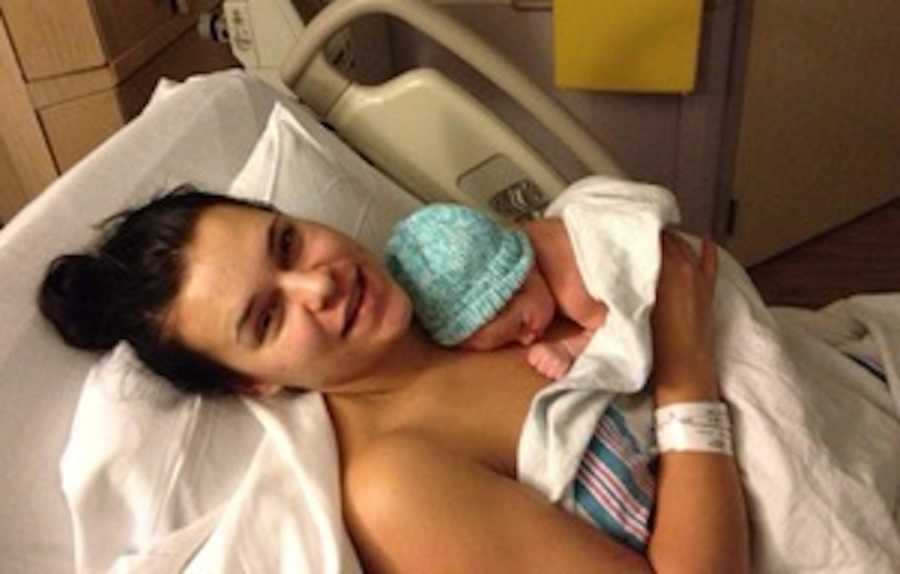
15 months later we were pregnant again. I had told my then-fiancee if we can do it once, we can do it twice and give our oldest a sibling. I was convinced it was a girl because our pregnancies were soooo different! I was sick the entire time, and I only gained about 20 pounds. With my first, I pushed 35. I felt awful each and every day. This time, labor seemed like a cakewalk, minus the fact my epidural stopped working at 7 centimeters and his cord was around his neck, but 15 hours in and out came a healthy 6.12 pounds baby boy. They are now 6 and 8 years old, and they are the best of friends.
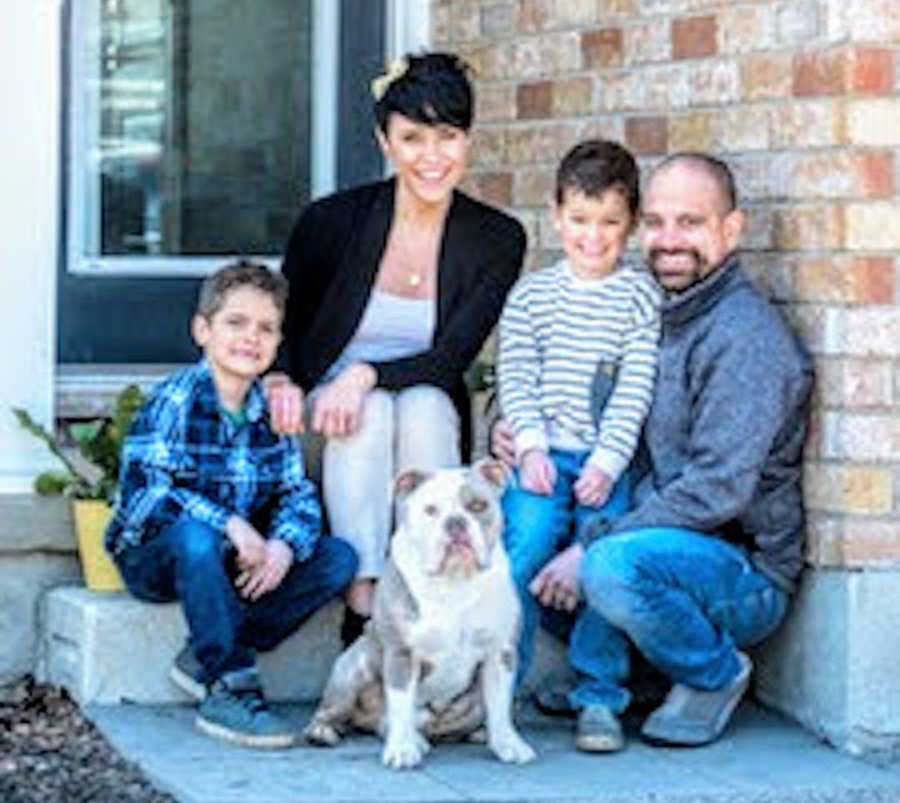
When my youngest son was a year and a half, and we made the decision we didn’t want any more kids. I underwent a hysterectomy. I was always suspected of having the sister disease of endometriosis which is Adenomyosis (Ad-en-o-my-o-sis when the lining of the uterus infiltrates the muscle of the uterus). The cure for Adenomyosis is a hysterectomy.
But I do want it known a hysterectomy has no part in helping with endometriosis. Endometriosis is when cells similar, but not the same as the lining of the uterus, are found outside of the uterus. They work alongside hormones and cause inflammation, adhesions, and pain. I thought, finally, my month-long periods will be over and I can get back to normal life after 15 years of this.
I was wrong. 3 and a half months post-hysterectomy, I started to develop thoracic endometriosis symptoms (when endometriosis cells reside within your lungs), I tracked my symptoms and realized they worked in a cyclical pattern. I threw myself into the online endometriosis community. I learned more information from fellow advocates around me than I ever had in the last 16 years of dealing with this disease.
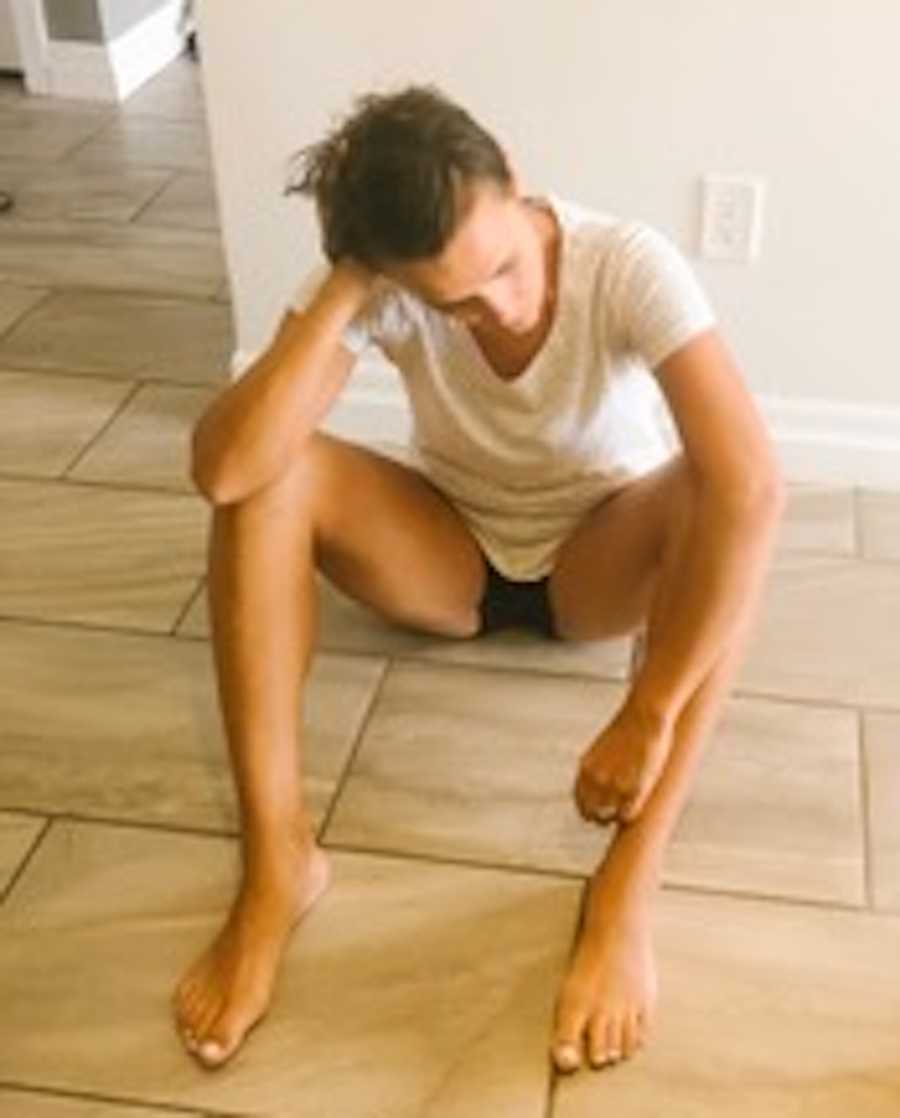
I learned about endometriosis specialists. They have doctors who specialize in endometriosis, yet I was never sent to one. And yes, they are different from an OBGYN. I learned the difference in skill, understanding, and complexity of the disease. I learned the difference between hormonal management versus surgical excision. I learned the difference between excision of endometriosis and ablation of endometriosis. An endometriosis specialist excises the disease, removes it entirely. An OBGYN ablates the disease, burning the top surface but leaving the disease behind.
I went to my family doctor and explained to him I was concerned I have thoracic endometriosis and explained all of my symptoms to him. He told me endometriosis can’t reside outside of the pelvic cavity and I was dealing with hormonally induced anxiety attacks (I’ve never had anxiety in my life). He refused a referral back to my gynecologist and sent me home with Zoloft and Ativan.
I called the office the next day and came up with another reason why I would need to see my gynecologist again. I had to lie to get the care I knew I needed. Yet the seed of doubt had been planted. Maybe it is anxiety, maybe it isn’t endometriosis. I took the meds, and they did nothing. It took 3 years of climbing the health care ladder, educating myself in a disease far more than anyone should ever have to educate themselves and fight, for the surgery I knew would save my life.
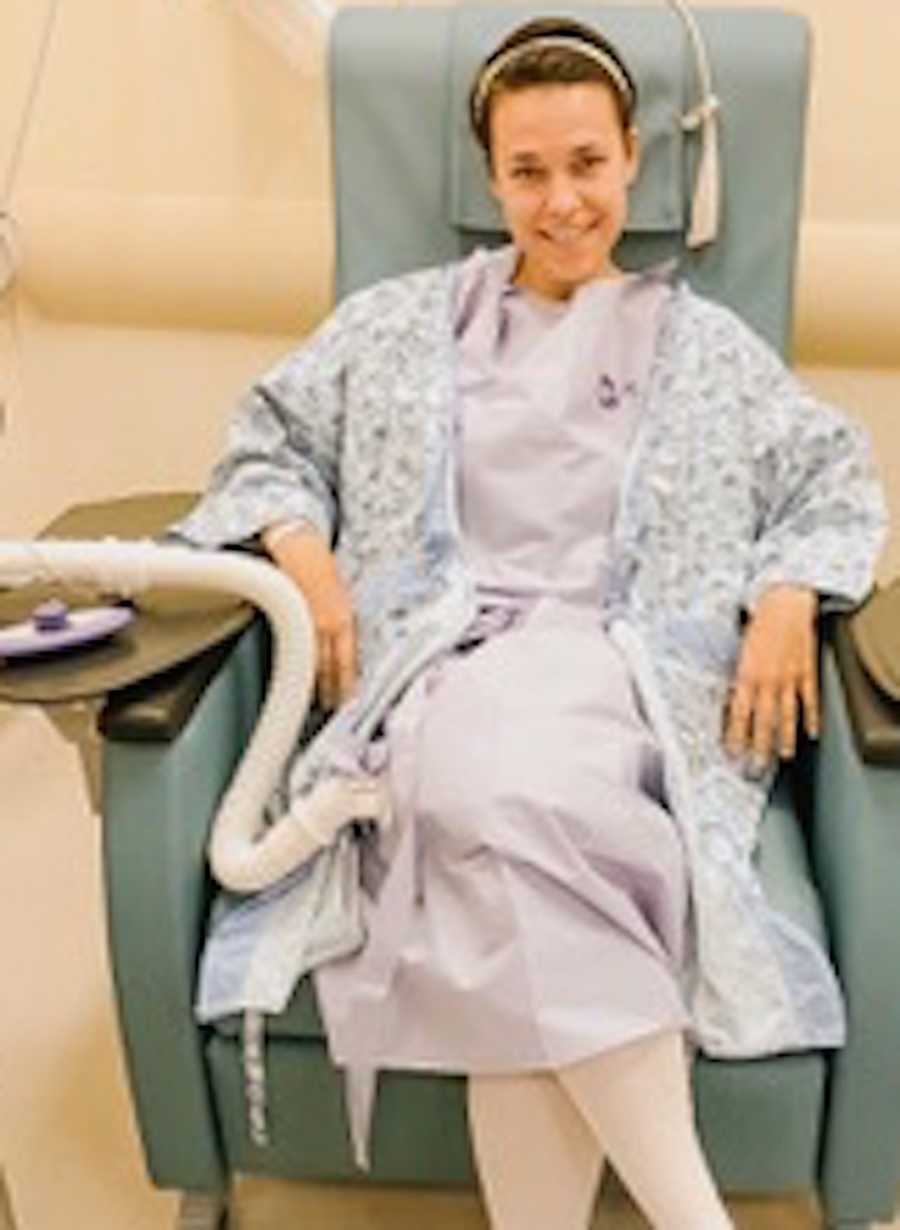
It wasn’t easy, it was a lot of appointments. Between my endometriosis specialist and my thoracic surgeon, the battle of information versus misinformation, and not allowing no for an answer. You see, on average it takes 7 to 10 years to be diagnosed with pelvic endometriosis, which is more common than thoracic endometriosis. The cause for the delays in care, diagnosis, and treatment is due to the inconsistency of information available. There is no standard of treatment that is followed, endometriosis patients go through lists of misdiagnoses before coming to their endometriosis diagnosis.
We are often told we are overdramatic, making it up for attention, mentally unstable— all while really suffering severe pain and dealing with doctors who, just frankly, aren’t educated enough in the disease to recognize the symptoms. The 3 years were hard, defeating, emotional, and an all-around struggle. My biggest symptom and complaint within my endometriosis journey was not being able to fully breathe. I would have inflammation in my lungs, which would cause severe shortness of breath. I was constantly having chest x-rays done, because thoracic endometriosis can, and does, cause lung collapses.
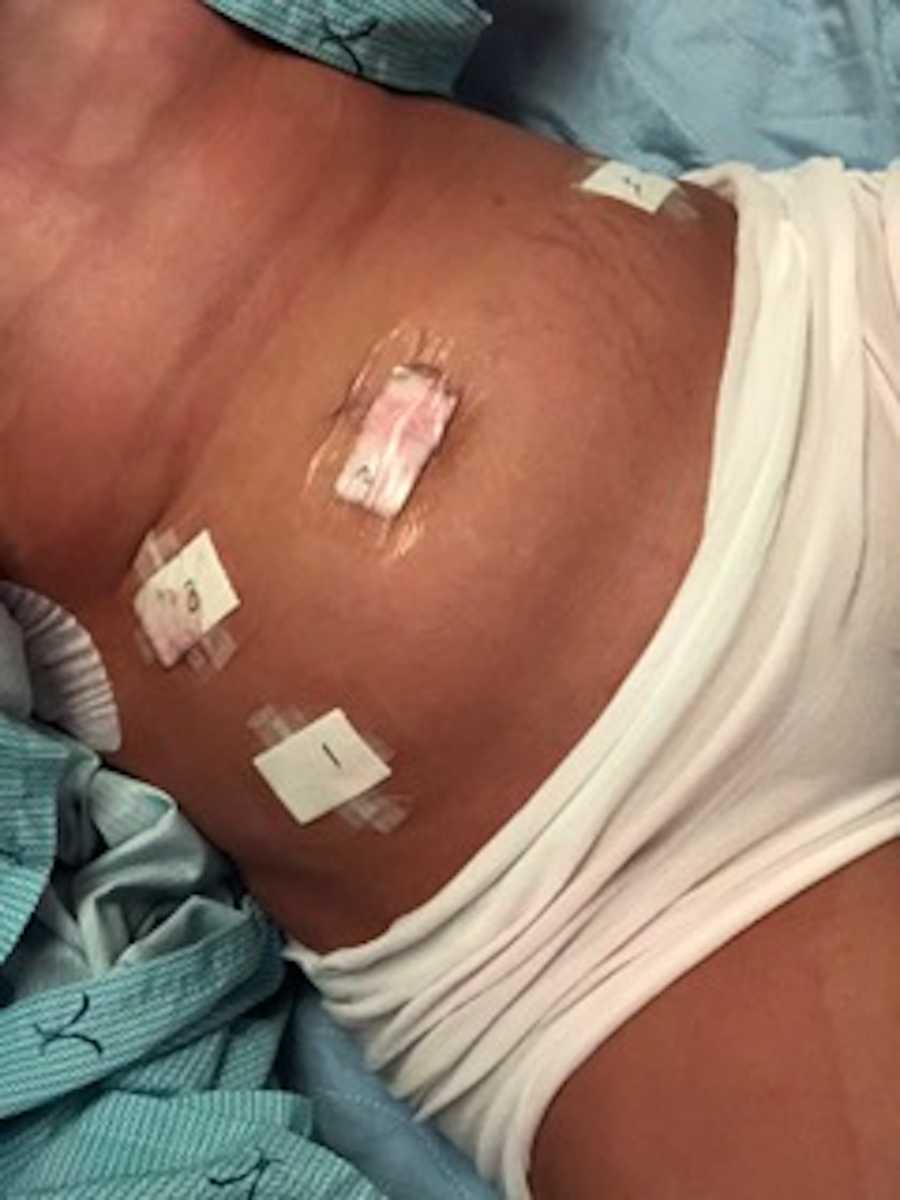
I tried my hardest to do my best at being a mom, a wife, a friend, and a business owner. It wasn’t rainbows, it wasn’t sunshine, it was survival. My own two kids are the most compassionate, kind, and empathetic kids I’ve ever met. I would love to say I instilled that in them, but the reality is my disease did that for me. They saw me struggle each and every day. Spending countless hours in the bathtub, unable to have enough energy or breath to read them stories before bed, to make their lunches, to help them with homework, or to help brush their teeth. I was unable to load and load my dishwasher, carry a basket of laundry up the stairs or any type of housework.
I was functioning at 30% quality of life, and as much as I tried to hide it, some days I just couldn’t. No matter how much I tried. Since having endometriosis excision surgery paired with video-assisted thoracic surgery, I have never felt better. I now live life at 90% efficiency, 90% of the time. There is no cure yet for endometriosis, but regaining a quality of life that you once used to have that was stolen, is something I will never take for granted. No management aspect for myself gave me the results that expert surgery did, and for that, I will always be thankful for my surgeons.
I now take what I have learned and experienced, and spend my free time educating and guiding others on their endometriosis journey, to help them become their own best advocate. I launched the endometriosis foundation of Canada in March of 2020. I am hopeful to be a part of the changes that need to be made when it comes to endometriosis care, in Canada, and across the world. No one deserves to suffer from this disease, let alone suffering alone.”
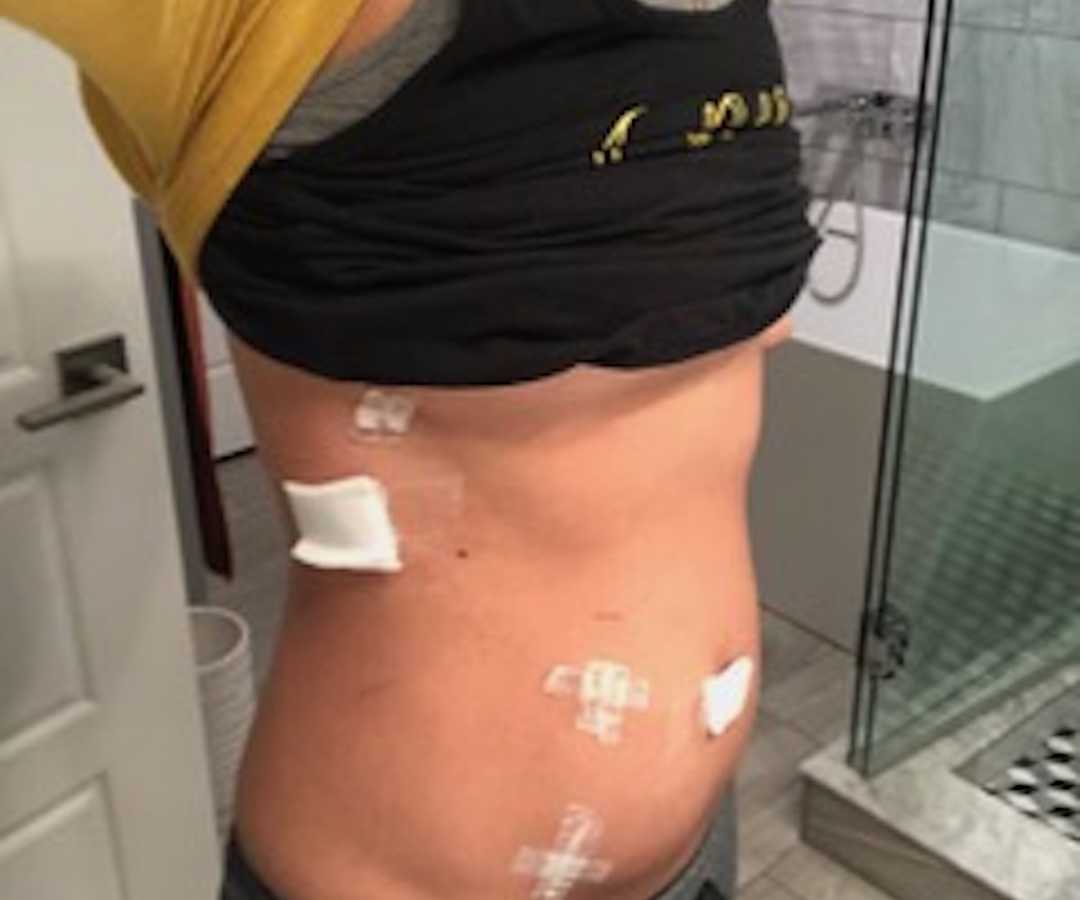
This story was submitted to Love What Matters by Alexandra Camara from Guelph Ontario Canada. Follow her journey on Instagram. Be sure to subscribe to our free email newsletter for our best stories.
Read more stories like this:
Give other women strength and courage to love themselves. SHARE this story on Facebook.

